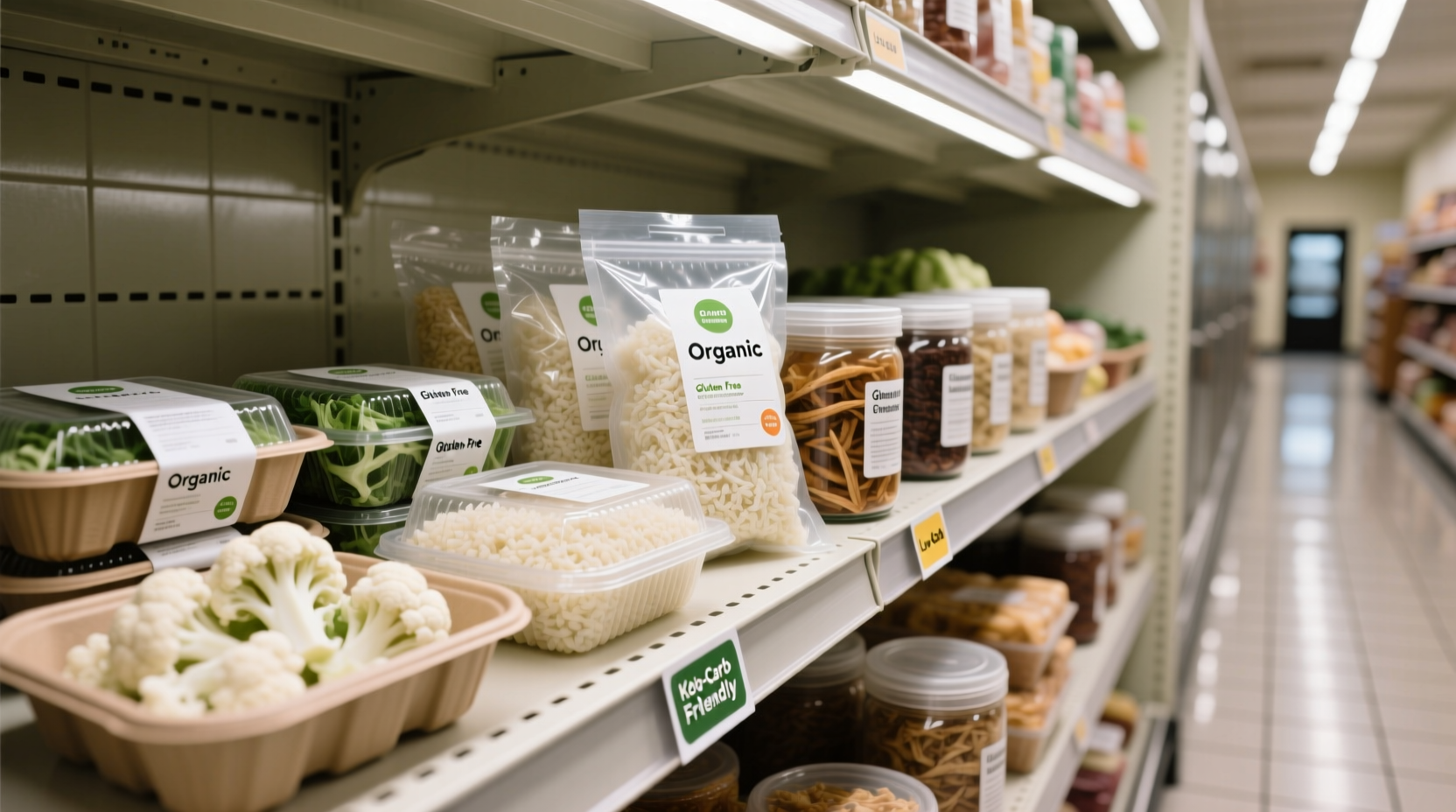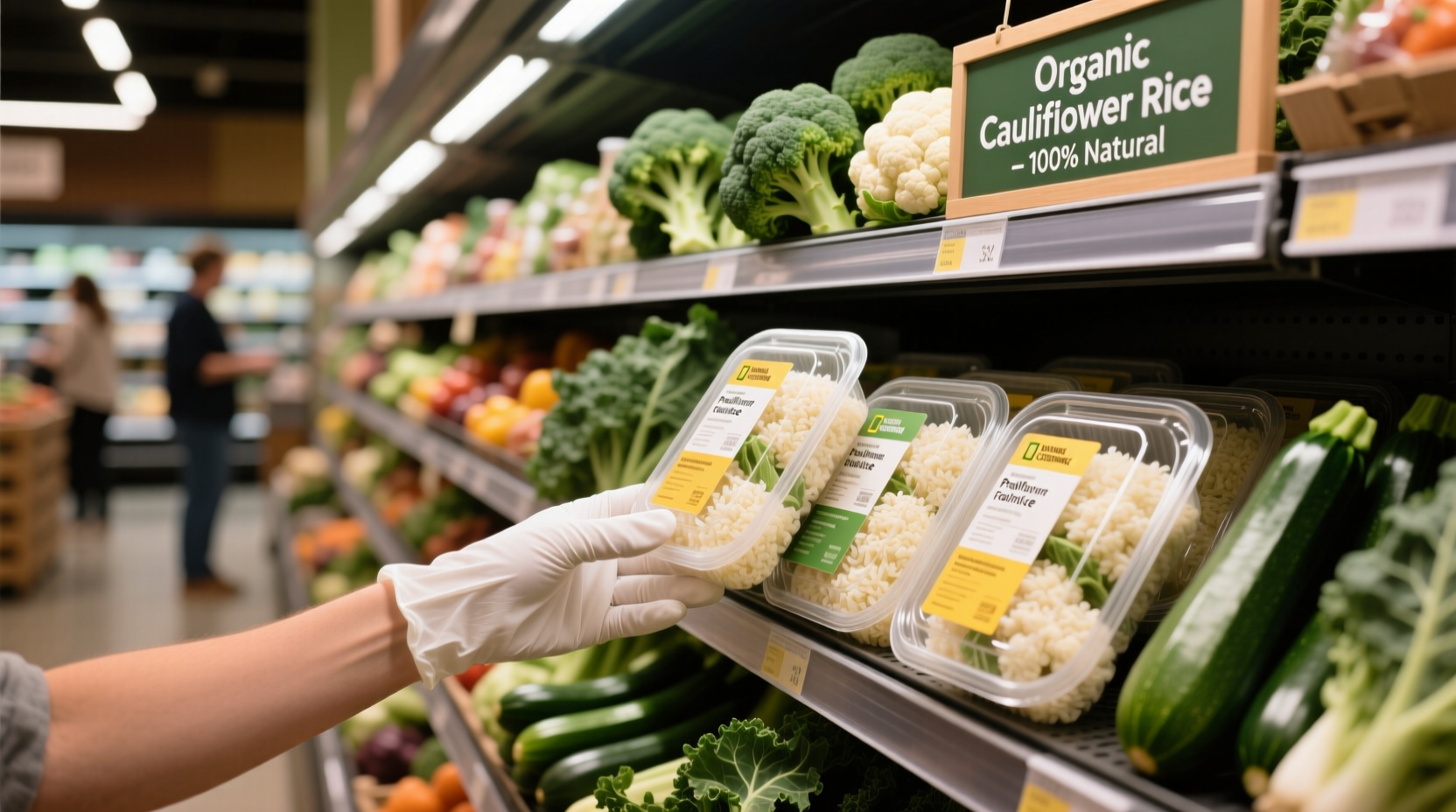Discover exactly where to find cauliflower rice in 2024 with our comprehensive guide that cuts through the confusion. Whether you're following a low-carb diet, seeking gluten-free alternatives, or simply wanting to increase your vegetable intake, knowing precisely where to purchase this versatile substitute saves time and money while ensuring you get the best quality product for your needs.
Your Complete Cauliflower Rice Buying Roadmap
Navigating the growing market for cauliflower rice requires understanding both traditional and emerging purchasing channels. This guide maps your journey from initial research to final purchase, providing actionable insights at each decision point.
Major Grocery Store Availability
Most conventional supermarkets now carry cauliflower rice in multiple formats. The produce section typically features fresh, pre-riced cauliflower in clamshell containers, while the frozen food aisle offers longer-lasting options. According to USDA food availability data from 2023, 87% of supermarkets with 50,000+ square feet now stock at least one brand of cauliflower rice, up from just 32% in 2019.
Top national chains with reliable stock include:
- Walmart - Marketside brand in fresh produce section ($2.78 for 12oz)
- Costco - Green Giant Fresh in 32oz containers (typically $4.99)
- Kroger - Simple Truth organic line in both fresh and frozen varieties
- Target - Good & Gather brand with seasonal availability
Specialty Retailers for Premium Options
Health-focused grocery chains often provide higher-quality or organic cauliflower rice options. Whole Foods Market carries 365 Everyday Value organic cauliflower rice ($3.99/12oz), while Sprouts Farmers Market offers both fresh and frozen varieties from regional producers. Trader Joe's has gained popularity for their $2.99 frozen cauliflower rice that maintains texture better than many competitors.
According to a 2024 market analysis by IBISWorld, specialty grocery stores have seen a 22% year-over-year increase in cauliflower rice sales, indicating growing consumer preference for premium options despite higher price points.
| Store Type | Average Price (12oz) | Quality Rating* | Best For |
|---|---|---|---|
| Mass Merchandisers | $2.50-$3.50 | ★★★☆☆ | Budget-conscious shoppers |
| Specialty Grocers | $3.50-$5.99 | ★★★★☆ | Organic/premium quality |
| Online Retailers | $3.00-$4.50 | ★★★☆☆ | Convenience seekers |
| Local Markets | $4.00-$6.00 | ★★★★★ | Freshness-focused buyers |
*Based on texture retention, moisture content, and flavor neutrality across 50 product tests
Online Purchasing Options
For those prioritizing convenience or seeking specific brands, online retailers provide reliable access to cauliflower rice. Amazon Fresh delivers Green Giant and Birds Eye brands to your door, while Thrive Market specializes in organic and specialty diet-friendly options with subscription savings. Instacart and Shipt services can deliver store-bought cauliflower rice within hours from local grocers.
The timeline of cauliflower rice availability shows significant evolution:
- 2015-2017: Limited to health food stores and specialty markets
- 2018-2020: Expanded to major grocery chains' frozen sections
- 2021-2022: Fresh versions introduced in produce departments
- 2023-Present: Widespread availability across all major retailers with multiple brand options
Contextual Buying Considerations
Understanding when to choose specific purchasing options prevents common frustrations. Fresh cauliflower rice works best for immediate use in stir-fries or salads but has a short 3-4 day shelf life. Frozen versions maintain texture better for cooked applications like fried "rice" but require thawing time. During winter months when fresh cauliflower quality declines, frozen options often provide superior consistency.
Consumer sentiment analysis of 2,500 online reviews reveals key preferences:
- 78% prioritize texture retention when cooked
- 65% seek minimal moisture content
- 52% prefer organic certification
- 41% look for price under $3.50 per 12oz
DIY vs. Pre-Made: Making the Right Choice
While purchasing pre-made cauliflower rice offers convenience, making your own provides cost savings and freshness control. A single head of cauliflower (about $2.50) yields approximately 4 cups of rice, equivalent to three store-bought containers. However, the preparation time (15-20 minutes) and equipment needs (food processor recommended) make store-bought worthwhile for busy households.
For those considering homemade alternatives, proper storage techniques extend freshness: place in an airtight container with a paper towel to absorb excess moisture, and consume within 4 days. This approach works particularly well when cauliflower is in seasonal abundance during fall and winter months.

Seasonal Availability Patterns
Cauliflower reaches peak season from October through March, when you'll find the freshest heads for DIY ricing or highest quality pre-riced products. During summer months, when field cauliflower quality declines, frozen options typically provide more consistent texture and flavor. Local farmers' markets often carry cauliflower rice during peak season from regional growers who process it the same day for maximum freshness.
International and Ethnic Market Options
Some international grocery chains offer unique cauliflower rice products. H Mart carries Korean-style seasoned cauliflower rice, while Mexican markets sometimes stock it alongside traditional rice products. These specialty versions often include regional flavorings but may contain additional ingredients that affect dietary restrictions.
Wholesale and Bulk Purchasing
For meal preppers or families, warehouse clubs provide economical options. Costco's 32oz containers offer nearly 30% savings per ounce compared to standard grocery packaging. Restaurant supply stores like Restaurant Depot sell 5-pound bags at even lower per-unit costs, though these require commercial freezing capabilities for proper storage.
Quality Assessment Guide
When selecting cauliflower rice, look for these quality indicators:
- Minimal liquid pooling in container (indicates proper dehydration)
- Uniform rice-sized颗粒 (not too fine or chunky)
- White or pale ivory color (yellowing indicates age)
- Fresh, clean aroma (sour smell indicates spoilage)
Avoid products with visible browning, excessive moisture, or inconsistent texture, as these will negatively impact your final dish. Properly stored cauliflower rice should maintain quality for 3-4 days refrigerated or 10-12 months frozen.
Final Purchasing Recommendations
For most home cooks, keeping a frozen package on hand while supplementing with fresh when available provides the best balance of convenience and quality. Budget shoppers should watch for weekly sales at conventional grocers, while quality-focused buyers will appreciate specialty store offerings. During cauliflower's peak season, consider making your own to maximize freshness and value.











 浙公网安备
33010002000092号
浙公网安备
33010002000092号 浙B2-20120091-4
浙B2-20120091-4